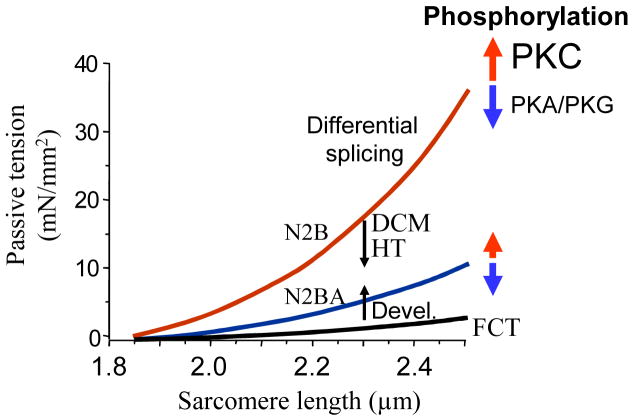Figure 2.
Titin-based passive stiffness tuning-mechanisms. Differential splicing gives rise to isoforms of varying stiffness. During postnatal development (Devel) passive stiffness increases due to switching of fetal cardiac titin (FCT) to adult N2B and N2BA isoforms; hypothyroidism (HT) and dilated cardiomyopathy (DCM) alter splicing in the opposite direction. PKA and PKG phosphorylation reduce and PKC phosphorylation increases passive stiffness.

